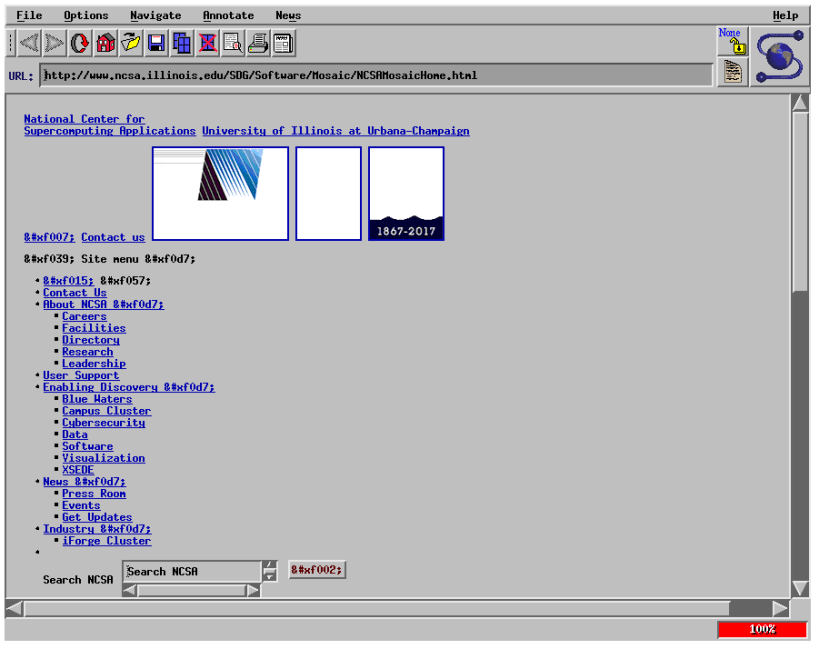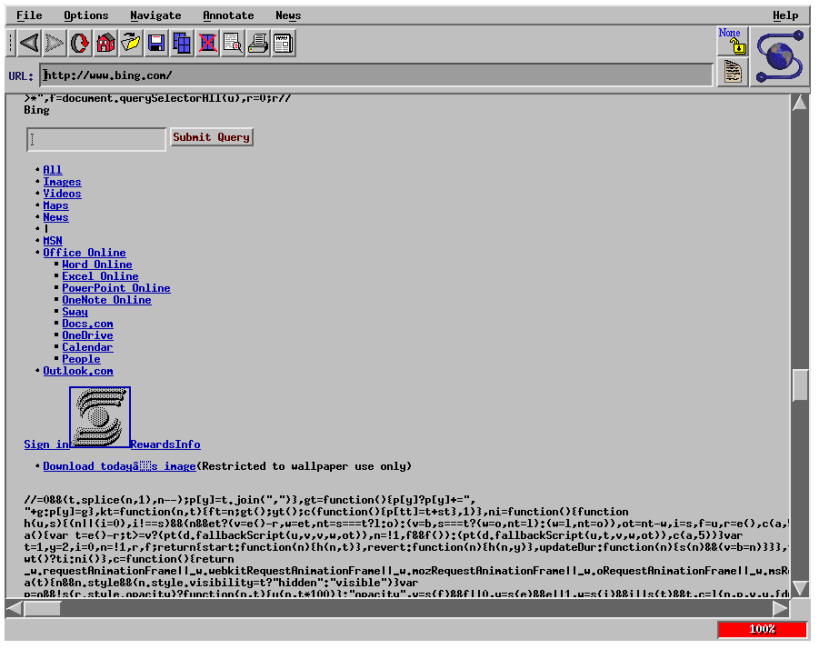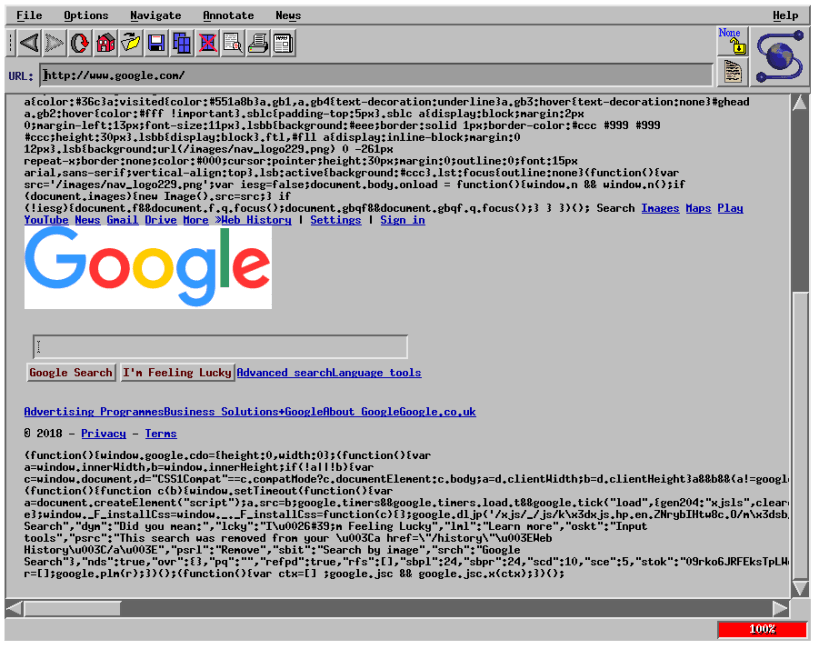




This is NCSA Mosaic 2.7, one of the first graphical web browsers.
NCSA Mosaic, or simply Mosaic, is the web browser that popularized the World Wide Web and the Internet. It was also a client for earlier internet protocols such as File Transfer Protocol, Network News Transfer Protocol, and Gopher. The browser was named for its support of multiple internet protocols. Its intuitive interface, reliability, Microsoft Windows port and simple installation all contributed to its popularity within the web, as well as on Microsoft operating systems.[4] Mosaic was also the first browser to display images inline with text instead of displaying images in a separate window.[5] While often described as the first graphical web browser, Mosaic was preceded by WorldWideWeb, the lesser-known Erwise and ViolaWWW.
Mosaic was developed at the National Center for Supercomputing Applications (NCSA) at the University of Illinois Urbana-Champaign beginning in late 1992. NCSA released the browser in 1993, and officially discontinued development and support on January 7, 1997. However, it can still be downloaded from NCSA.
Find out more at: https://en.wikipedia.org/wiki/Mosaic_(web_browser)
Built from source code hosted at: https://github.com/alandipert/ncsa-mosaic Thanks to John Lenton for the snapcraft config.
This snap is maintained by the Snapcrafters community, and is not necessarily endorsed or officially maintained by the upstream developers.
You are about to open
Do you wish to proceed?
Thank you for your report. Information you provided will help us investigate further.
There was an error while sending your report. Please try again later.
Snaps are applications packaged with all their dependencies to run on all popular Linux distributions from a single build. They update automatically and roll back gracefully.
Snaps are discoverable and installable from the Snap Store, an app store with an audience of millions.

On Arch Linux, snap can be installed from the Arch User Repository (AUR). The manual build process is the Arch-supported install method for AUR packages, and you’ll need the prerequisites installed before you can install any AUR package. You can then install snap with the following:
git clone https://aur.archlinux.org/snapd.git
cd snapd
makepkg -si
Once installed, the systemd unit that manages the main snap communication socket needs to be enabled:
sudo systemctl enable --now snapd.socket
If AppArmor is enabled in your system, enable the service which loads AppArmor profiles for snaps:
sudo systemctl enable --now snapd.apparmor.service
To enable classic snap support, enter the following to create a symbolic link between /var/lib/snapd/snap and /snap:
sudo ln -s /var/lib/snapd/snap /snap
Either log out and back in again, or restart your system, to ensure snap’s paths are updated correctly.
To install NCSA Mosaic, simply use the following command:
sudo snap install mosaic
Browse and find snaps from the convenience of your desktop using the snap store snap.

Interested to find out more about snaps? Want to publish your own application? Visit snapcraft.io now.